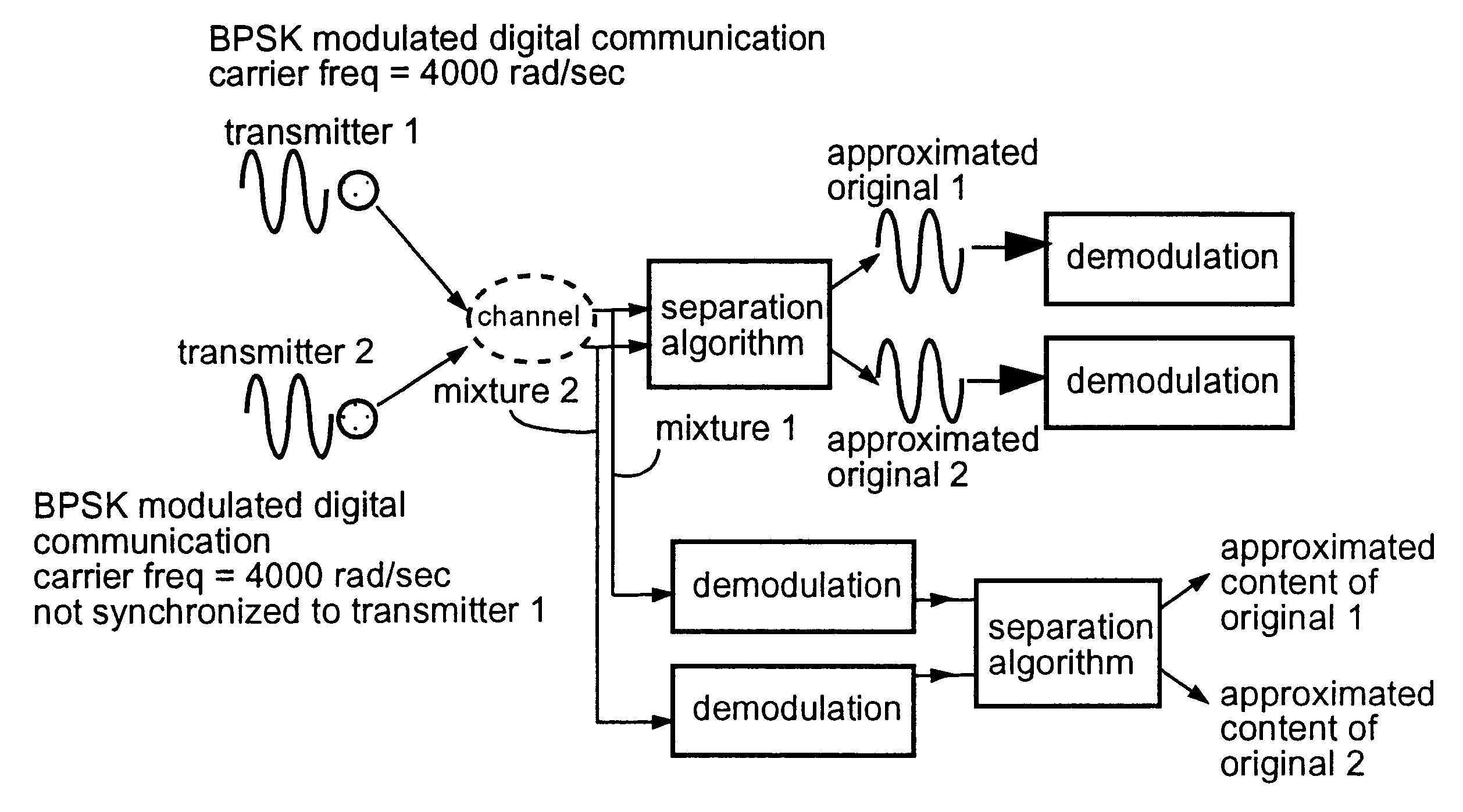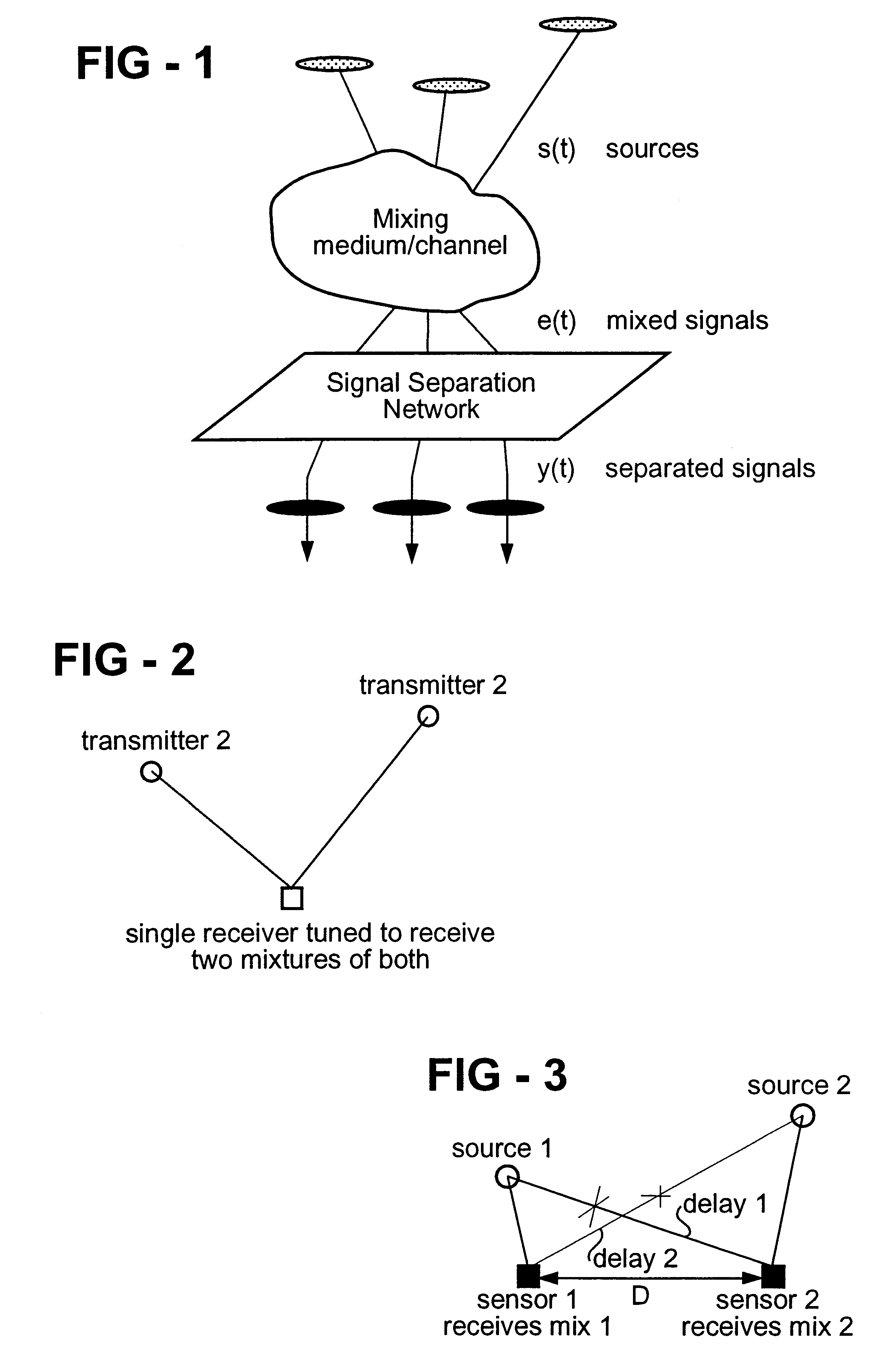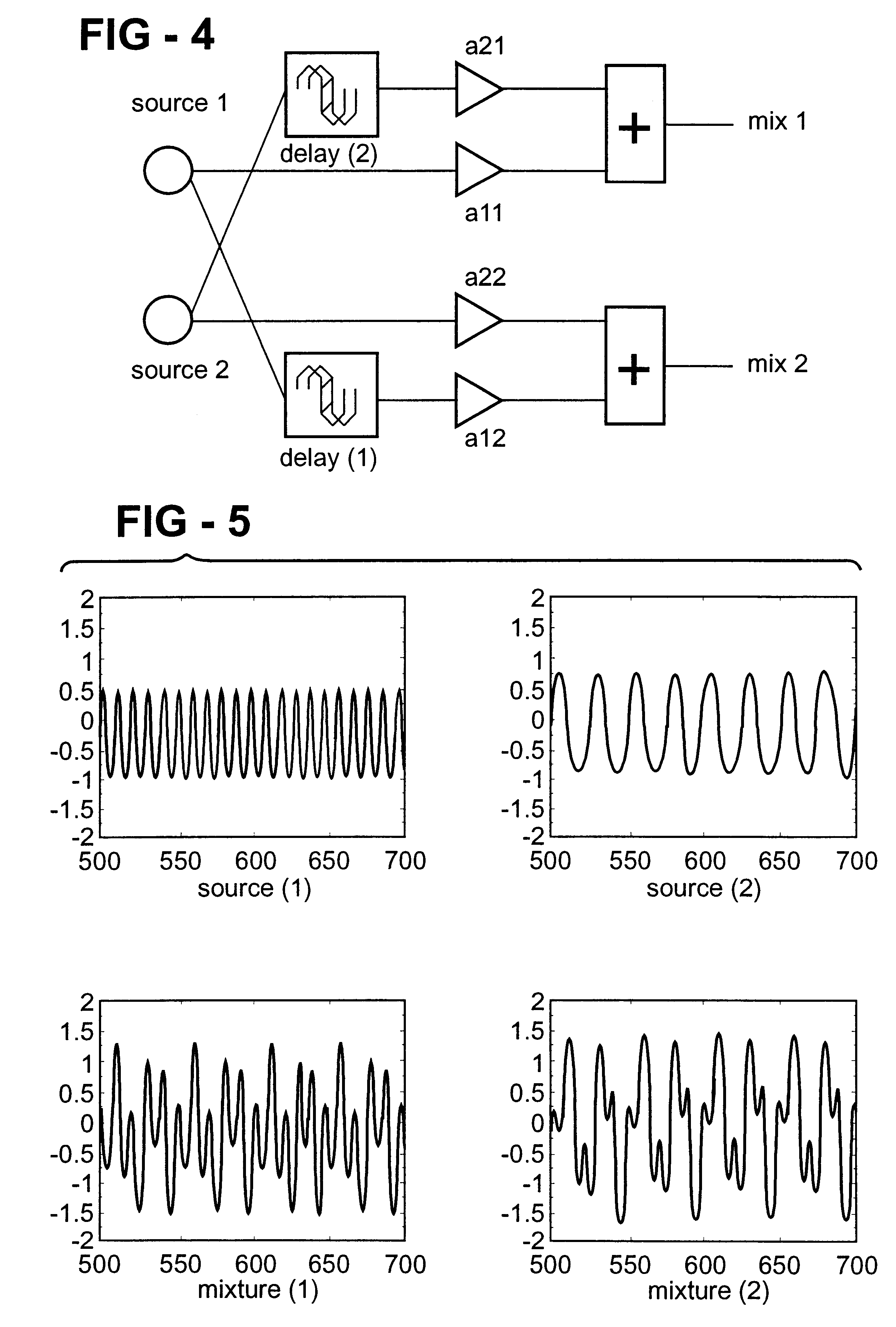Continuously adaptive dynamic signal separation and recovery system
a dynamic signal and recovery system technology, applied in the field of system for recovering original signals, can solve the problem of limited use of statically mixed signals, and achieve the effect of reducing the number of signals used for separating statically mixed signals
- Summary
- Abstract
- Description
- Claims
- Application Information
AI Technical Summary
Benefits of technology
Problems solved by technology
Method used
Image
Examples
example iii
Signal Localization and Following for Post-disaster Recovery
After a natural or manmade disaster, it is critical to locate and rescue the survivors. For example after an earthquake or cave-in in a subway, it is of utmost importance to locate the people trapped under rubble or in a tunnel segment as quickly as possible. Knowing where to dig might make the difference between life and death for the victims. Under these circumstances, the signal separation and recovery method and apparatus of this invention could be used to process either passively or actively received signals from the disaster site. During this process, the signals emanating or reflected from survivors can be separated from other signals and noise. These separated signals, which often will be rather weak, can still be used to determine the presence and the approximate location of survivors. Additional methods such as beamforming or other physical mechanisms that translate or rotate the sensor array can be used to locate...
example i
Diagnosis of Mechanical Sounds
Identifying the sounds that different parts of a mechanical system make followed by an assessment of their characteristics for conformance to an accepted norm is a possible method. Many experienced human mechanics use this method as a rough indicator of the class of potential problems.
Dynamic signal separation of this invention can be used to distinguish sounds made by different components of a mechanical system, e.g., the sound of a loose bearing from a vibrating belt on a noisy engine, when it is integrated on machine diagnostic equipment. These sounds can in turn be analyzed--on or off line--by a human or automatic mechanic to identify the part or parts in need of maintenance.
example ii
Material, Surface and Layer Inspection
Radar, laser, xray, ultrasound or other means may be used to obtain body surface response from an item or object of interest, such as webs of materials, sheet metals, pipes, underground or overhead cables casings, poles, weight bearing structures, beams, tunnel enclosures, bridges, buildings, aircraft, navy vessels. This can be done while the object is in operation, e.g., while the building is occupied, or while the aircraft is in flight. Each surface, layer of these objects is often associated with a certain signal signature that distinguishes it from others. The dynamic mixing of the signals specific to certain materials, parts, surfaces and layers, however, often prohibit their reliable identification and inspection.
This problem would be eliminated through the cooperative use of a suitable sensor array and the signal separation and recovery apparatus of this invention. The signatures of individual components, layers and surfaces could be sepa...
PUM
 Login to View More
Login to View More Abstract
Description
Claims
Application Information
 Login to View More
Login to View More - R&D
- Intellectual Property
- Life Sciences
- Materials
- Tech Scout
- Unparalleled Data Quality
- Higher Quality Content
- 60% Fewer Hallucinations
Browse by: Latest US Patents, China's latest patents, Technical Efficacy Thesaurus, Application Domain, Technology Topic, Popular Technical Reports.
© 2025 PatSnap. All rights reserved.Legal|Privacy policy|Modern Slavery Act Transparency Statement|Sitemap|About US| Contact US: help@patsnap.com



